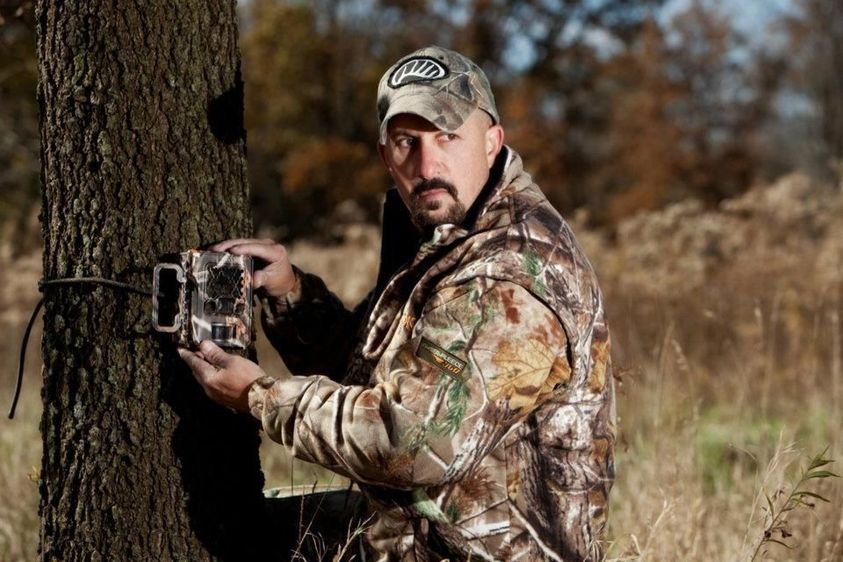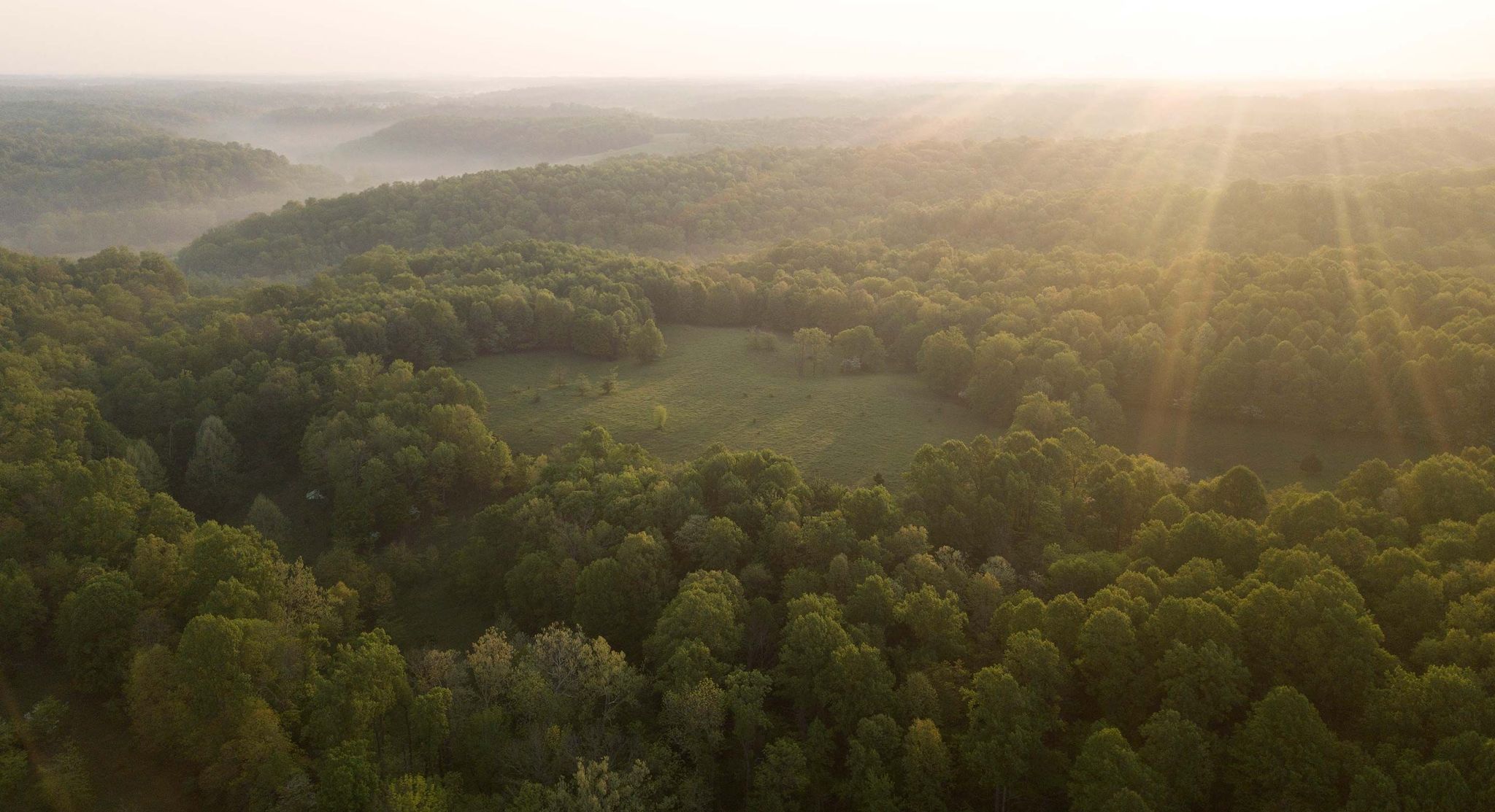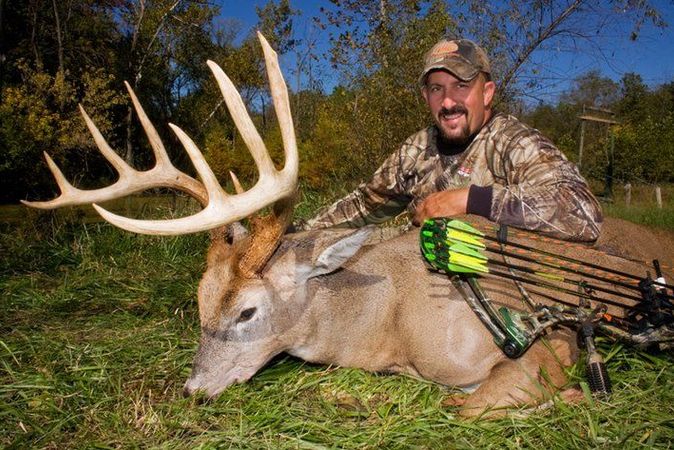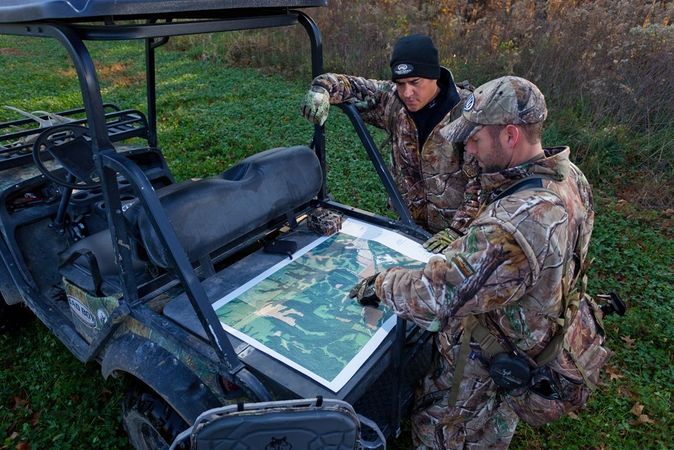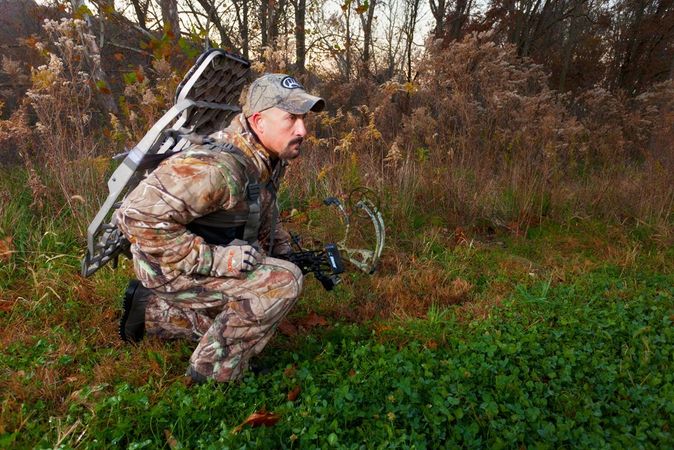Low impact is the key to being successful. During this period, the least amount of pressure will cause bucks to become nocturnal. My favorite low-impact strategy is to glass favored feeding areas from a distance and position my Reconyx cameras where deer travel is narrowed; One of my favorite is a simple gap along a stretch of fence. This method allows me to locate big bucks without wasting valuable time hanging stands where there are no big bucks. Current big buck sign is good, but nothing beats actually seeing big bucks. In addition, this scouting method allows me to study a big buck’s habits without leaving my scent all over his living area.
Once I have a fairly good handle on a particular buck’s pattern, I slip in during the afternoon and hang a tree-stand. By a “fairly good handle,” I mean I know a good buck is frequenting a particular food source; exactly when, and where is still somewhat speculative.
Choosing the wind direction to hunt a particular stand is always a complex choice when hunting a food source. Ideally, I prefer to hunt a crosswind, this way my scent is blown away from the deer’s approach and towards a part of the feeding area or timber where I don’t expect deer to be while I’m on stand.
Your first time on stand is always your best chance of tagging a trophy buck. However, don’t count on it, try to position your stand so that you’ll be able to observe the largest number of deer, without being winded or seen. In the area I hunt, on average per season, 15 buck will pass within bow range for every one I would consider harvesting.
Setting up alternate stand locations is another way to keep your presence to a minimum. Depending on the situation, I average a different stand location every two days. In addition, I give each stand at least two days rest, and generally my morning stands are in different areas than my evening stands. It’s been my experience: afternoon stands are not productive during this period.
During the early season it is far more effective not to draw any attention to your location. At different times rattling and grunting can be very productive whitetail luring techniques. However, early on, you goal is to intercept your quarry as he travels between his feeding and bedding area, or at his feeding and bedding area, or at his feeding area. Granted, bucks do quite a bit of sparring during this period, and the tickling of antlers would probably draw their attention. Nevertheless, if they catch you, the game is over.
Keep your stand and your access and exit route well away from bedding areas. Later in the season I highly recommend hunting near bedding areas; however, during this period it is wise to hunt on, or as close to the food source as possible. There is no sense taking the risk of getting caught in his bedroom when he’ll probably get to his feeding area before dark and return the next morning well into shooting light hours. However, unless I have a totally undetectable morning route to my stand, I will only hunt evenings. During this period less is often best. The fewer number of times deer catch you, the higher your odds will be of tagging a “keeper.”
For many, the early season is a period to scout and prepare for the rut. However, it can be a premium time to shoot a mature buck. During the early season you’re hunting deer that basically have not been hunted since last season; hence, making it an excellent time to catch a big buck off guard.
- Dan Perez


